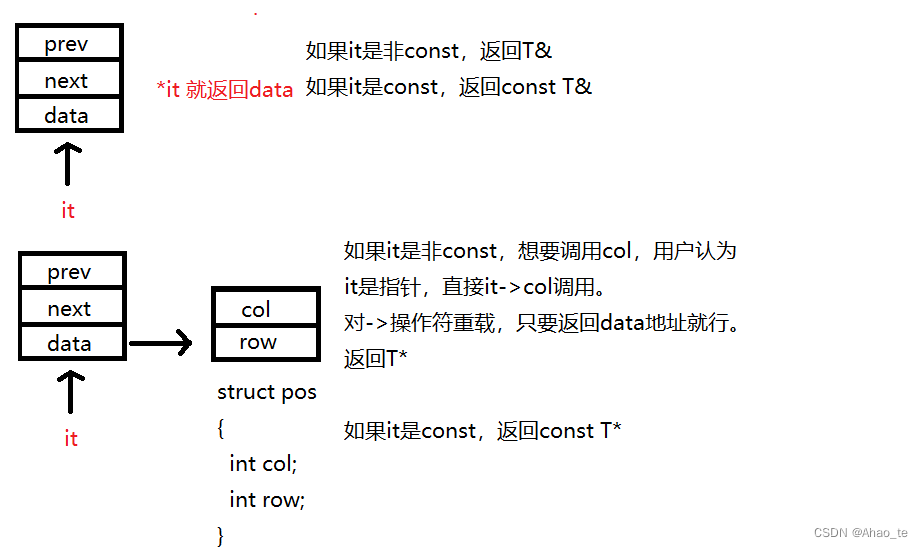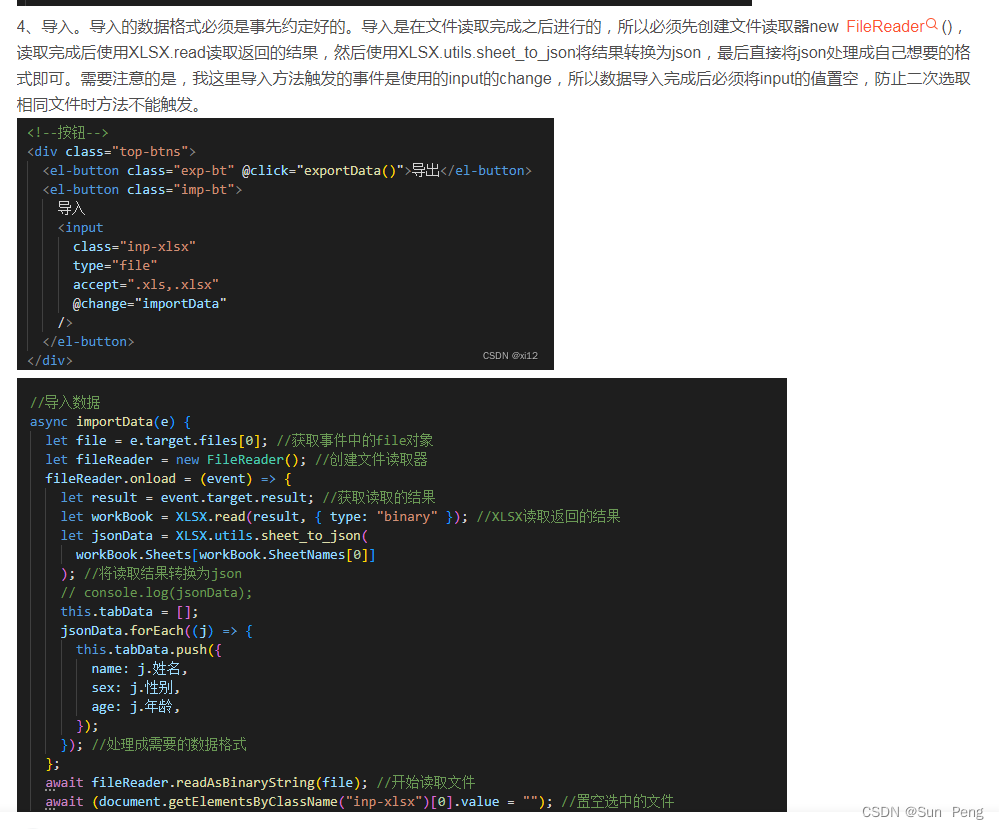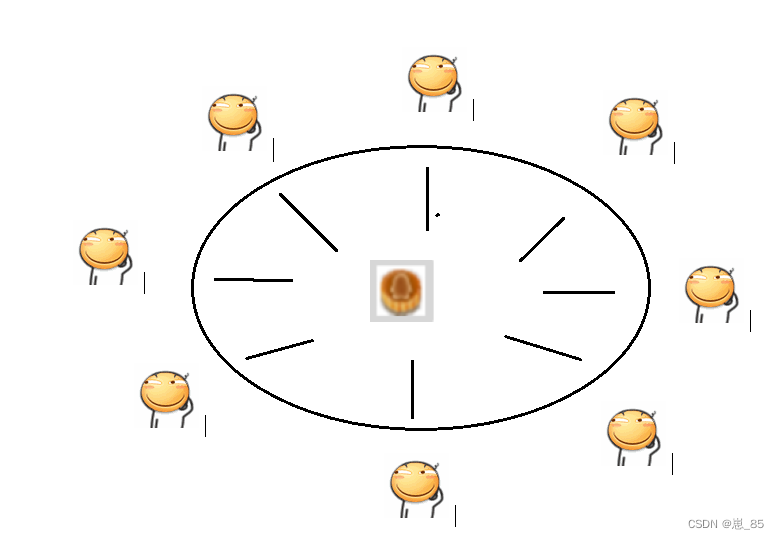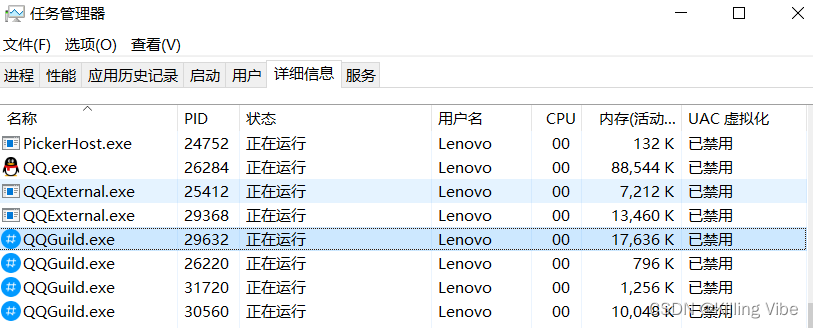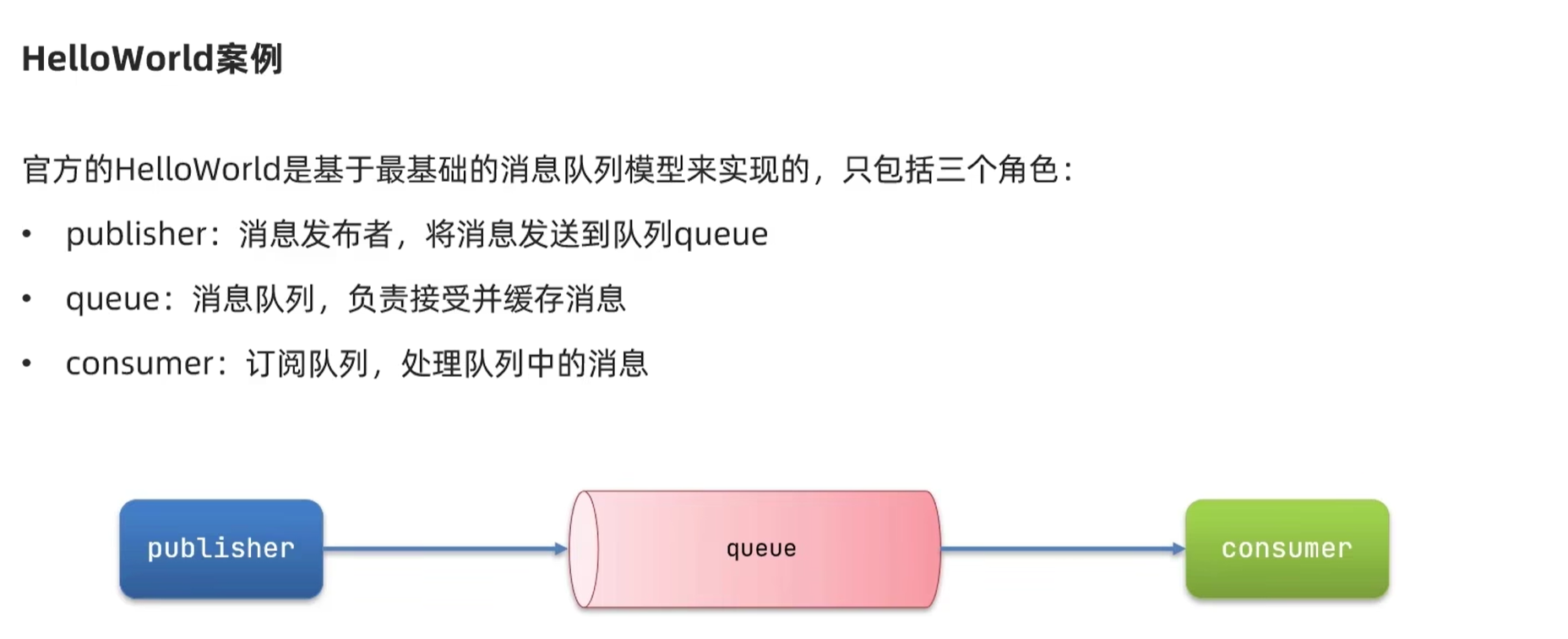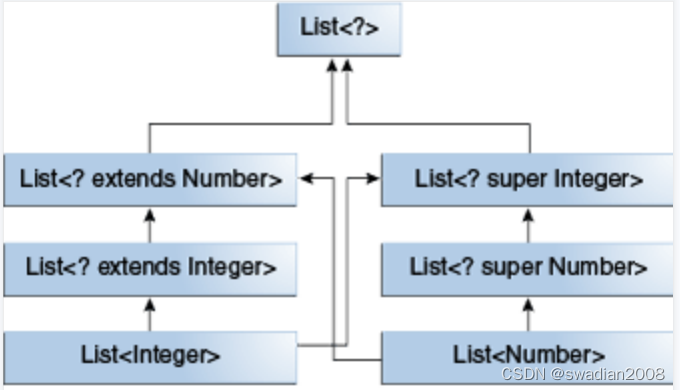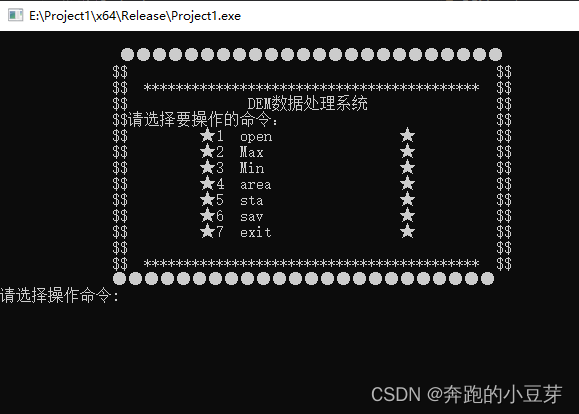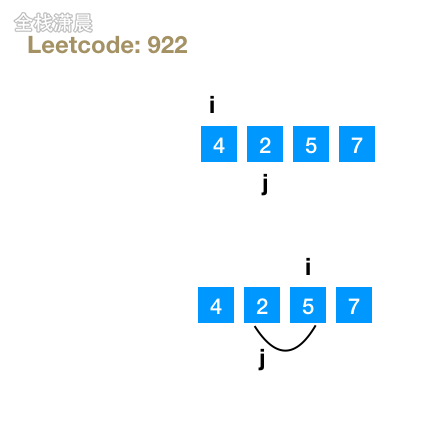文章目录
- 1、搭建List的基本框架
- 2、List中iterator和const_iterator
- 3、反向迭代器revser_iterator
1、搭建List的基本框架
STL中List容器底层是一个双向带头循环链表。

这里简单搭建一个List,下面我们不断完善。
思路:
1、List作为一个双向带头链表,所以除了创建一个List类,还需要有一个结点结构体有着可以被外部访问的成员prev、next、data。
2、List应当有一个哨兵结点,所以默认构造必须我们写且初始化一个结点设为哨兵结点。
#pragma once
#include <iostream>
#include <assert.h>
using namespace std;
namespace test
{
template<class T>
struct Node
{
struct Node<T>* _prev;
struct Node<T>* _next;
T _data;
//在后续插入建立新结点,初始化
Node(const T& x = T())
:_prev(nullptr)
,_next(nullptr)
,_data(x)
{}
};
template<class T>
class list
{
typedef struct Node<T> node;
public:
void initlist()
{
_head = new node;
_head->_next = _head;
_head->_prev = _head;
_size = 0;
}
// 构造
list()
{
initlist();
}
private:
node* _head;
size_t _size;
};
}
2、List中iterator和const_iterator
C++中的迭代器iterator虽然在使用上可以当成指针一样用,但是对于List如果要像指针一样,那么就需要对iterator的运算符进行重载实现。
那么可以将iterator封装成一个类进行实现。
有了迭代器,list就可以实现begin()和end()对链表结点进行定位。
并且也能在特定位置实现insert。
#pragma once
#include <iostream>
#include <assert.h>
using namespace std;
namespace test
{
template<class T>
struct Node
{
...
};
template<class T>
class iterator
{
typedef struct Node<T> node;
public:
iterator(node* it)
:_node(it)
{}
//前置
iterator& operator++()
{
_node = _node->_next;
return *this;
}
//后置
iterator& operator--()
{
_node = _node->_prev;
return *this;
}
bool operator!=(iterator& it)
{
return it._node != _node;
}
T& operator*()
{
return _node->_data;
}
node* getnode()
{
return _node;
}
private:
node* _node;
};
template<class T>
class list
{
typedef struct Node<T> node;
typedef iterator<T> iterator;
public:
iterator begin()
{
return iterator(_head->_next);
}
iterator end()
{
return iterator(_head);
}
void initlist()
{
_head = new node;
_head->_next = _head;
_head->_prev = _head;
_size = 0;
}
// 构造
list()
{
initlist();
}
//拷贝构造
template <class InputIterator>
list(InputIterator first, InputIterator last)
{
initlist();
while (first != last)
{
push_back(*first);
++first;
}
}
iterator insert(iterator pos, const T& x = T())
{
node* newnode = new node(x);
node* cur = pos.getnode();
node* prev = cur->_prev;
prev->_next = newnode;
newnode->_prev = prev;
newnode->_next = cur;
cur->_prev = newnode;
_size++;
return iterator(newnode);
}
void push_back(T x = T())
{
insert(end(), x);
}
private:
node* _head;
size_t _size;
};
}
const_iterator
对于const对象,迭代器也需要用const的。
对于const迭代器,不能写成const iterator it 这修饰的是it,需要修饰的iterator所以需要一个新的类型const_iterator
const_iterator保证的是被指向的结点内容不能变化。
下面看两种情况
对于const和非const类型的改变,可以直接通过模板的类型泛型进行更改。
// 同一个类模板实例化出的两个类型
// typedef __list_iterator<T, T&, T*> iterator;
// typedef __list_iterator<T, const T&, const T*> const_iterator;
template<class T>
class list_iterator
{
typedef struct Node<T> node;
public:
typedef list_iterator<T, Ref, Ptr> Self
list_iterator(node* it)
:_node(it)
{}
//前置
Self& operator++()
{
_node = _node->_next;
return *this;
}
//后置
Self& operator--()
{
_node = _node->_prev;
return *this;
}
bool operator!=(list_iterator<T> x) const
{
return _node != x._node;
}
/*T& operator*()
{
return _node->_data;
}*/
Ref operator*()
{
return _node->_data;
}
Ptr operator->()
{
return &(_pnode->data);
}
node* getnode()
{
return _node;
}
private:
node* _node;
};
编译器对it->_col这个位置做了一个优化,本来获取data地址后应该是it->->_col,但是编译器做了优化就是it->_col,但it.operator->()->_col这样不会受影响。
struct Pos
{
int _row;
int _col;
Pos(int row = 0, int col = 0)
:_row(row)
,_col(col)
{}
};
void Print_list(const list<Pos>& lt)
{
list<Pos>::const_iterator it = lt.begin();
while (it != lt.end())
{
//我们知道it的底层
//cout << (*it)._col << " " << (*it)._row << endl;
//cout << (&(*it))->_row << ":" << (*it)._col << endl;
//普通认为是指针
cout << it->_col << " " << it->_row << endl;
//cout << it.operator->()->_col << " " << it.operator->()->_row << endl;
++it;
}
cout << endl;
}
3、反向迭代器revser_iterator
反向迭代器就是从链表的尾部到头部。



在底层rend()其实就是begin(),rbegin()其实就是end(),
并且reverse_iterator其实是一个适配器,通过iterator封装的一个类,
所以如果实现了一个容器的正向迭代器,那么反向迭代器就一定能实现。
#include <iostream>
#include <assert.h>
using namespace std;
namespace test
{
template <class Iterator, class Ref, class Ptr>
class ReverseIterator
{
typedef ReverseIterator<Iterator, Ref, Ptr> self;
public:
ReverseIterator(Iterator it)
:_it(it)
{}
Ref operator*()
{
Iterator tmp = _it;
return *(--tmp);
}
Ptr operator->()
{
return &(operator*());
}
self operator++()
{
--_it;
return *this;
}
self operator--()
{
++_it;
return *this;
}
bool operator!=(const self& s) const
{
return _it != s._it;
}
private:
Iterator _it;
};
template <class T>
struct ListNode
{
struct ListNode<T>* _next;
struct ListNode<T>* _prev;
T data;
ListNode(T x = T())
:_next(nullptr)
,_prev(nullptr)
,data(x)
{}
};
template <class T, class Ref, class Ptr>
struct list_iterator
{
typedef struct ListNode<T> node;
typedef struct list_iterator<T, Ref, Ptr> Self;
list_iterator(node* p)
:_pnode(p)
{}
bool operator!=(Self x) const
{
return _pnode != x._pnode;
}
bool operator==(Self x) const
{
return _pnode == x._pnode;
}
Ptr operator->()
{
return &(_pnode->data);
}
Ref operator*()
{
return _pnode->data;
}
Self& operator++()
{
_pnode = _pnode->_next;
return *this;
}
Self operator++(int)
{
Self tmp(*this);
_pnode = _pnode->_next;
return tmp;
}
Self& operator--()
{
_pnode = _pnode->_prev;
return *this;
}
Self operator--(int)
{
Self tmp(*this);
_pnode = _pnode->_prev;
return tmp;
}
node* _pnode;
};
template <class T>
class list
{
typedef struct ListNode<T> node;
public:
//简化类型
typedef list_iterator<T, T&, T*> iterator;
typedef list_iterator<T, const T&, const T*> const_iterator;
typedef ReverseIterator<iterator, T&, T*> reverse_iterator;
typedef ReverseIterator<const_iterator, const T&, const T*> const_reverse_iterator;
iterator begin()
{
return iterator(_head->_next);
}
iterator end()
{
return iterator(_head);
}
const_iterator begin() const
{
return const_iterator(_head->_next);
}
const_iterator end() const
{
return const_iterator(_head);
}
reverse_iterator rbegin()
{
return end();
}
reverse_iterator rend()
{
return begin();
}
const_reverse_iterator rbegin() const
{
return end();
}
const_reverse_iterator rend() const
{
return begin();
}
void initlist()
{
_head = new node;
_head->_next = _head;
_head->_prev = _head;
_size = 0;
}
//构造
list()
{
initlist();
}
//构造
template <class InputIterator>
list(InputIterator first, InputIterator last)
{
initlist();
while (first != last)
{
push_back(*first);
++first;
}
}
void swap(list<T>& lt)
{
std::swap(_head, lt._head);
std::swap(_size, lt._size);
}
list(const list<T>& lt)
{
initlist();
list<T> tmp(lt.begin(), lt.end());
swap(tmp);
}
list& operator=(list<T> lt)
{
swap(lt);
return *this;
}
bool empty() const
{
return _size == 0;
}
size_t size() const
{
return _size;
}
~list()
{
clean();
delete _head;
_head = nullptr;
}
void push_back(T x = T())
{
insert(end(), x);
}
void push_front(T x = T())
{
insert(begin(), x);
}
void pop_back()
{
erase(--end());
}
void pop_front()
{
erase(begin());
}
iterator insert(iterator pos, const T& x = T())
{
node* newnode = new node(x);
node* cur = pos._pnode;
node* prev = cur->_prev;
prev->_next = newnode;
newnode->_prev = prev;
newnode->_next = cur;
cur->_prev = newnode;
_size++;
return iterator(newnode);
}
iterator erase(iterator pos)
{
assert(pos != end());
node* cur = pos._pnode;
node* prev = cur->_prev;
node* next = cur->_next;
delete cur;
prev->_next = next;
next->_prev = prev;
_size--;
return iterator(next);
}
void clean()
{
iterator it = begin();
while (it != end())
{
it = erase(it);
}
}
private:
node* _head;
size_t _size;
};
总结:
list迭代器为了重载其多个操作符,所以弄了一个封装类。迭代器在不同场景经过操作符函数返回了不同类型,其中还要区别const类型,通过模板泛型能方便我们应对这些情况。
反向迭代器是对正向迭代器的封装,所以实现了正向迭代器就能实现反向迭代器。
本节完~
